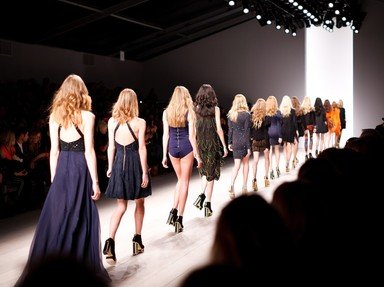Quiz Answer Key and Fun Facts
1. Fashion and cosmetics turned the world upside down after the austerity of the war years. Which close-fitting, bell-shaped hat was all the rage in the roaring twenties and became a symbol of the decade?
2. The Roaring Twenties being the Jazz Age inspired young people to dance. As such, clothing had to change to accommodate this need. Which one of the following fashion changes did *NOT* occur during the '20s?
3. In 1926, Vogue magazine likened which French fashion designer's latest creation, a black dress, to the Model T Ford?
4. The "finger wave" was a popular style in the 1920s. Where would you see it?
5. Fashion in underwear also changed dramatically in the '20s. Which one of the following was *NOT* an underwear feature of the era?
6. In the Far East, the Roaring Twenties also made a mark. A traditional dress was given a makeover with a more form-fitting style and this became the vogue among women in 1920s Shanghai. Which dress, the only Chinese one listed, was this?
7. Post-WWI cosmetics played a role in assisting women recover from war horrors. They chose to assert their new sense of feminine power. Which of the following options was *NOT* a feature of a cosmetics look from the '20s?
8. During the 1920s rhinestones, so-called because they were manufactured on the Rhine River, made 'bling' popular by Coco Chanel. By whom were they invented?
9. Which popular hat of the 1920s that later became associated with the gangsters of the era, actually started out its life as a feminist icon worn by the actress Sarah Bernhardt in the 1880s?
10. For men, spectator shoes were popular during the 1920s. What was the main feature of spectator shoes?
Source: Author
1nn1
This quiz was reviewed by FunTrivia editor
kyleisalive before going online.
Any errors found in FunTrivia content are routinely corrected through our feedback system.
